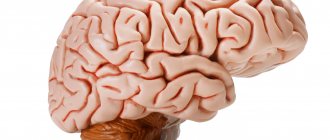What gives value to all that we know? Perhaps we will not be mistaken if we say that this is the very fact that we can extract information from the depths of our memory, the very fact that we can remember something. And the better developed our ability to remember, the more valuable our knowledge base is in total, the more we can put into practice, the more opportunities we have to achieve goals and success. But how can you improve your memory? How to develop memory? How to remember more and faster? These questions are asked not only by you and me, but also by a huge number of scientists and specialists from various fields. And our selection today will help you boost your intellect and learn to remember more effectively.
1
Spaced repetition method
The spaced repetition technique is quite old, but there is still debate about its effectiveness. We decided to look at this issue from a scientific point of view and determine the most optimal modes of memory operation. In this article we will talk about the forgetting curve, developed in the late 1880s by psychologist Hermann Ebbinghaus, and the new theory of forgetting proposed by Benedict Carey. Naturally, we'll cover the best repetition intervals, as well as introduce you to the flash card method and spaced repetition apps. Read more…
3
Types and intervals of repetitions
Repetition of information can be divided into several groups:
- Time Dependency: Ultra-short-term
is when it needs to be repeated quickly and reproduced soon. For example, in one hour. Used for memorizing arrays of information at competitions, for training, and practicing memorization skills. - Short-term
is repetition over a distance of several days to a week. The usual period is 3 to 5 days. - Long-term
- if we need information for a long time, then it needs to be repeated at intervals of a week or more. This will allow you to remember it from several weeks to several years.
- Repetition from memory
is when you hold information in your head and use what you have stored in your memory when repeating. It happens:
- By location
- this is when memorizing new information occurs by converting it through associations into visual images and attaching it to old, familiar elements, some cells in our memory
,
which are locations.
is when paper flashcards act as a stimulus for recalling another piece of information. Used, for example, when memorizing foreign words.
, these are also a kind of cards, but the programs are either on phones or on computers. Here information is a kind of hook that will allow you to pull out the necessary information from memory.
is when you read a book and then read it again and repeat it. Any more is useless, since it involves the usual repetition of information.
- Normal repetition
. This is repeated every day several times or every other day. In other words, repeated repetition.
. This is repetition at increasing intervals of time. It could be:
- in manual mode
- this is when you know certain repetition intervals determined personally for yourself;
is when repetition intervals are set for you externally (by some programs or reminder systems).
Which repetition type should you choose?
When choosing the type of repetitions, take into account the timing and volume of information, the goals of memorizing it.
Either we need to know the entire structure of the information being remembered, or high-speed (stimulus) memorization is required. For example, foreign words, countries and capitals, terms. Different goals - different approaches.
On the one hand, you can repeat information every day. However, this approach is not as effective because you spend a lot of time.
The most convenient method in this regard is the method of interval repetitions. And if you combine it with various memorization techniques, it will be a huge breakthrough for learning.
Mnemonics will allow you to immediately work and remember a large amount of information, and interval repetitions will help transfer this volume to long-term memory.
It can be used when you know the intervals for yourself and strive to fall within them. Typically this happens as follows:
- immediately after memorization;
- further, during the day;
- then the next day;
- then within 3 days;
- within 5-7 days;
- 10-14 days;
- 3-4 weeks;
- 2-3 months;
- every 6-12 months.
In this case, each interval is counted from the previous step. Using such a system, you can study any knowledge available to you much faster.
Let us tell you how this works using the example of the most popular training systems.
System for memorizing numbers and cards - ChDP
We live in the 21st century, in the era of information technology. And we happily transfer many of our problems to machines. One of these problems is the need to remember information. Indeed, why do we need to remember our to-do list, groceries or any large amounts of data if all this is just a few clicks away? Despite this, many people try to improve their memory. This is convenient in everyday life and very useful: by forcing your brain to work in your youth, you will thank yourself in old age. In this article we will introduce you to a special system for memorizing numbers and cards called “Person - Action - Object” (PA). Read more…
4
Chunking method (crushing, fragmentation)
This method involves combining several elements that need to be remembered into one small group. Many people use it when trying to remember phone numbers or bank account numbers, but this method can be used for other types of information. The chunking approach is often reflected in the way we write phone numbers - with a dash. We do it this way in order to better perceive a set of numbers and remember them faster. Is there a difference between the perception of a set of numbers: 89265660000 and 8-926-566-0000? Of course have.
The key principle that makes this technique work is the combination of items based on semantic encoding, that is, items are placed into small groups according to context or some kind of pattern.
For example, some may group their grocery list alphabetically, others by food type. In any case, this method is only successfully implemented when you identify the most natural patterns for yourself and follow them.
How to train your memory
Did you know that scientists estimate that the human brain, when compared to a computer, can store between 1 and 7 million megabytes of data? Probably many have heard about this, but not everyone is able to boast of such a phenomenal memory. How nice it would be to read a book or textbook and reproduce in detail what it says! How cool it is to remember all the names, faces and birthdays! How wonderful it is to find information in the storage of your head at the right moment that will answer any question! Many only dream of this, but there are those who are capable of it, because it is possible to achieve such results - you just need to know how! We will tell you about this. Read more…
5
The meaning of the “24–3–7” method
9 tricky ways to quickly remember anything
After a study of the characteristics of human memory, scientists have derived the so-called “forgetting curve”, which can be used to calculate the rate at which over time the information embedded in the human brain begins to “disintegrate” and be forgotten. Therefore, in order to prevent the complete “disintegration” of previously acquired knowledge, it must be repeated, but not just like that, but with a certain frequency. And the most effective moment for repetition comes when the brain has almost forgotten the previously learned data.
Thus, the main principle of the spaced repetition method is not to memorize information, but to repeat it at strictly designated intervals. Moreover, these intervals should increase each time.
There is a formula for spaced repetition:
Y= 2X+1
Y is the day when information begins to be forgotten and needs to be repeated
X is the day of the last repetition.
Thus, the essence of the method is as follows: you must repeat the learned information for the first time exactly after 24 hours. The time of the next repetition, if calculated using the formula, will be on the third day.
Y = 2 x 1 (first day of repetition) + 1 = 3 - the next repetition will be on the third day after receiving new information.
We calculate the next session again using this formula:
Y = 2 x 3 (day of the previous repetition) +1 = 7, i.e. the required data should be repeated in a week.
The number of repetitions using this formula is not limited. But with each subsequent time the information will be remembered longer, which means the interval at which it will need to be repeated becomes longer.
Leitner's system: 5 steps to learn anything
How often do you have to complain about your memory? How often do you need to remember something, but you just can’t remember it? And how quickly do you get so tired of repeating all this that you decide to do without this knowledge? About 80% of people who study, for example, a foreign language face a similar situation. And just to help them, the Leitner system was created, the main one of which is the so-called flash cards, on which information is recorded for memorization. However, it later turned out that the system is suitable for memorizing any information, not just linguistic information. What kind of system is this? We invite you to get acquainted in this article. Read more…
6
Associative figurative techniques
Methods of memorizing information, which are based on associative memory and imaginative thinking, are considered the most ancient. These techniques arose when our ancestors still had poorly developed abstract logical thinking. Therefore, image-based memorization is simple, convenient, and even a small child can use it.
By the way, ancient associative-figurative techniques for memorizing and reproducing information are passed down from generation to generation and some have reached us. And I think you use them sometimes. These are the so-called memory knots. By tying a knot, making a cross on our palms, or winding a thread on our finger, we repeat what we must remember. At this time, an associative connection is established in our brain between the “node” sign and specific information. And then, as soon as we see this “knot,” something that we should have remembered immediately pops up in our heads.
In the distant past, there was even a knotted letter, where each knot tied in a special way meant a certain information block. And the man talked, fingered the wicker with knots, remembering what to talk about next. The role of “knots” could be played by shells, multi-colored pebbles, and drawings on a tablet.
Nowadays, no one remembers a large amount of information using “knots.” But some techniques related to the activation of associative-figurative thinking can be recommended.
Techniques for memorizing numbers
Many people have difficulty remembering numbers. The point is not only that this is abstract, most often dry information, but also that it does not require thinking. Unless, of course, it's a numerical example or a math problem. And what is not processed by the brain in any way, is not included in mental activity, is remembered worst of all.
If instead of numbers you use images associated with them, then the memorization process is significantly simplified, and active mental activity promotes memorization.
Association images are usually individual in nature; everyone can come up with their own, the main thing is that they are interesting and bright. For example, the number 32 is easy to remember because it means 3 cheerful geese. And if it is 732, then the geese follow the hunched over granny (number 7). The image for the number 31 can be a trio of horses driven by a coachman. But this picture can be created for the more complex number series 324-17-05: three cheerful geese were sitting on a chair, and a hunched over granny with a stick brought them a dish and a ladle.
The images should be as lively and moving as possible; try to create a meaningful picture, a kind of cartoon. This will significantly increase the efficiency of memorizing and subsequent reproduction of information.
If you are not good with imaginative thinking, then numbers can be associated with words that begin with the same letter or have as many letters as the number you need to remember. For example: 457 – “Peter loves fishing.”
Associations can be meaningful, and numbers are easier to remember if you link them (establish a connection) to the house and apartment number, day and year of birth, school number, etc.
Remembering names and word groups
Associative-figurative techniques are also suitable for remembering names. The principle here is still the same - establishing connections and associations with images that have arisen in the brain.
The success of this technique is possible only if the associations, firstly, are vivid, and secondly, associated with a specific person. For example: Mikhail Belov is a polar bear. This is the simplest option. But Irina Stroganova is more complicated. What can you come up with here? Strict and vulnerable (if the characteristics match), slender and ruddy, scary and swearing, whittling and drawing, etc.
Often there is a problem with remembering a list of unrelated words. When memorizing, you need to establish a figurative or semantic connection between them. For example, listing the items we need to buy: bread, sugar, printer paper, thread and nails. We make up a sentence: “Bread and sugar, wrapped in paper and tied with threads, hang on a nail.”
Memorizing text
Large text is, of course, more difficult to remember, and you should not try to learn it word for word. Associative-figurative techniques will help in this case too. These include Cicero’s famous “Roman Room” method, which can be used to memorize the text of a message, report or speech at a seminar. Its essence is as follows.
Carefully read the text of the message, at the same time breaking it into small pieces - semantic parts. Each part should contain a key idea that can be summarized in a short phrase. By the way, just this elaboration of the text will help you remember it.
Imagine a room that is familiar to you, for example, your own apartment with all the furnishings, furniture, accessories, etc.
- Enter the apartment.
- Start reading the text again and at the same time “laying out” selected pieces of text on different pieces of furniture, not forgetting to repeat the main ideas. For example, you will place the introduction on the mirror on the right, and the next passage on the nightstand under the mirror. You will place the next part on the shoe rack. Remember what it's about? Then move from the hallway into the room and continue laying out the text.
- Having placed all the semantic pieces, look around the apartment again, check if they are all in their places, using short phrases-ideas for this.
- Then imagine walking out the door and locking it so that no one can change the order of the pieces.
This method is very effective, but it only works if you can speak well enough, that is, coherently express your thoughts on the merits of the matter, and know the terminology if you have a scientific message. After all, you didn’t memorize your report word for word.
The Roman Room method of Cicero is also called the method of places. It is based not only on figurative-associative memorization, but also on semantic one. Semantic techniques are currently considered basic for memorizing large amounts of textual information.
Mnemonics. Where to begin?
Have you ever forgotten passwords or names of new acquaintances? Is it difficult for you to learn a phone number in a few seconds, but memorizing a page of text can take a whole evening? After reading this article, you will forever get rid of the need to write down a list of products, and remembering a sequence of several dozen random words will not be difficult. Mnemonics is a set of techniques and methods that facilitate memorization and increase memory capacity through the formation of artificial associations. In this article you will learn the basic principles of using this technique. Read more…
7
Methods of memorizing information in modern school
The site editors are not responsible for the content of the article in this section. Author: Arzumanova L.V.
Methods of memorizing information in modern school
How often do you hear from children such expressions as “I have a bad memory”, “I studied all evening, but I don’t remember anything”, etc. These phrases are mentioned at the slightest forgetfulness, without realizing what a bad memory actually is. According to psychologists, memory is the process of organizing and preserving past experience, making it possible to reuse it in activity or raise it into the sphere of consciousness.
Memorization is one of the memory processes, consisting of consolidating perceived information, actions, experiences, thoughts and connections between them. Expanding your vocabulary is a necessary condition for successfully learning a foreign language. This is quite a difficult task, but there are various techniques that allow you to achieve real results and avoid monotonous cramming. You can use these methods yourself or teach your child to use them when memorizing foreign words. One of the most famous is the S.A. method. Gharibyan, the essence of which is as follows: similar-sounding words or parts of words of a familiar language are selected for foreign words and small funny sentences are composed.
Repetition is an important stage in consolidating the material being studied, which is necessary for long-term and strong memorization.
It should be noted that the volume of material studied increases and becomes more complex every year, and new subjects are introduced into the general education school curriculum. In addition, many students are engaged in self-education, in-depth study of individual subjects, and research work. Consequently, the memory load increases. To facilitate the work of memory, to reveal its reserves, it is necessary to master the basic methods and techniques of memorizing information, to use effective means for memorizing information, for training memory when memorizing foreign words, structures, etc. It is necessary to have not only theoretical knowledge about memory, but also to be able to apply it in practice in educational activities (for students) and in teaching foreign languages (for teachers).
Therefore, I consider one of the main goals of my work to familiarize students with the structure, functioning and age-related characteristics of memory and mastery of basic methods aimed at improving the memorization of information (lexical units and grammatical material) and the reproduction of memorized material.
Rhyme and rhythm Advertising specialists are well aware of the importance of rhyme for remembering various information. You, no doubt, have noticed that in many advertising videos, information about products is rhymed, and this contributes to faster memorization, and, consequently, faster sale of goods. Rhyming commercials themselves are etched into our memory, regardless of our desire, and they are often not so easy to get rid of. Therefore, when you come across important, but illogical and difficult to remember information, you should try to rhyme it. We will show how to do this using a simple example with a telephone number.
So, you need to remember the number 663-15-14. To do this, you can rhyme it as follows: Six six three one five one four I remember everything in the whole world.
Abbreviation (acronym) We come across abbreviations every day as their use is quite popular. We are already accustomed to words such as IMF, UN, etc. These acronyms not only shorten long names of organizations (International Monetary Fund, United Nations), but also help to remember them. The principle of abbreviation is also widely used to record various material that is not connected by logical principles, helps us remember it better and facilitates the process of recalling the necessary information from memory. You can try to apply this principle and soon see for yourself its success. The abbreviation can be used to record a wide variety of information. For example, to remember the colors of the rainbow: red, orange, yellow, green, blue, indigo, violet - we usually use the phrase: “Every hunter wants to know where the pheasant sits.” This, of course, is not exactly an acronym. In this expression, the first letters of the words that need to be remembered coincide with the letters of the words of a simple and easy to remember sentence that has some meaning. That is, the memorization of information is facilitated by both the meaning of a simple sentence and the fact that all the words of this sentence begin with the first letters of the words that need to be remembered. This is a kind of double effect.
Method of Object Arrangement This method came to us from Greece and is a way of memorizing objects by recording their location. You, no doubt, use this method often, although you are not aware of it. For example, if you are asked how many windows there are in your house, you may not immediately answer this question, but if you imagine that you are walking through your house, you will certainly easily count all the windows. This method can also be used to remember various items that are associated with a particular place. The first thing you need to do is establish some consistency in the listing of places. For example, if you mentally walk through your house, you can follow a predetermined direction: hallway, corridor, kitchen, dining room, living room, bedroom, nursery, etc. If you imagine your path from home to work, then the sequence could be like this: traffic light, newsstand, small square, funeral home, bus stop, etc. Let's say you need to remember the following list of necessary purchases: toilet paper, detergent, canned tuna, eggs and mayonnaise. Try to conjure up some vivid images in your mind related to the route to work. Imagine, for example, a traffic light wrapped in toilet paper, detergent spilling from a newsstand, park paths paved with cans of tuna, coffins covered in mayonnaise, and a bench at a bus stop littered with eggs. If you imagine these associations, then in the supermarket you will only have to remember your route from home to work, and memory will do the rest. The method described above promotes memorization because it allows you to group unrelated objects into meaningful sequences, such as, for example, a chain of objects you encounter on the way from home to work. The reliability of this method comes from the fact that you cannot forget frequently occurring sequences of objects.
Words that promote memorization The use of words that promote memorization is a type of method of arranging objects. But in this case, you use for memorization not a sequence of objects, but specific images, the names of which rhyme with numbers. Try to memorize the following list of items first. One is sir. Two is grass. Three are heroes. Four is the door. Five is a bed. Six is tough. Seven is a belt. Eight is a moose. Nine is a swan.
So, you can remember either this list or another one you wrote similar to this one. In any case, you must remember it by heart, so that it “bounces off your teeth.” We hope that this task will not be too difficult for you.
Finding connections between numbers and letters This method is widely used for memorizing numbers. Words, as a rule, have more meaning for us than numbers, and this method helps to “translate” numbers into words. This method is based on the correspondence between numbers and consonant letters, which are somewhat reminiscent of these numbers. Numbers and their corresponding consonants: 1 = t (one vertical line) 2 = c (two vertical lines) 3 = w (three vertical lines) 4 = h (initial letter of the number name) 5 = p (initial letter of the number name) 6 = b (the shape of the letter is similar to the shape of the number) 7 = c (the initial letter of the name of the number) 8 = c (the initial letter of the name of the number) 9 = d (the initial letter of the name of the number) O = o (the shape of the letter is similar to the shape of the number)
Once you have memorized which letters correspond to which numbers, you will be ready to use this method. Try to remember the connections between letters and numbers in a meaningful way, not mechanically. After you have memorized all the pairs, try to translate any number into a word or phrase by using these pairs and substituting vowels. You can use any vowels, but the consonants should only be those that are in the list. If you need to remember some important phone number, then first replace the numbers with consonants, and then insert any vowels between them so that you get a word or phrase. Then all you have to do is remember this word (or phrase), and you can translate it (or her) into a phone number at any time. This word (or phrase) may not have much meaning, but should be easy to remember. And in order for you to practice using consonants corresponding to the numbers, the list of which was given earlier, the following exercise is offered to your attention.
Using pictures The essence of this method is to translate proper names, various titles and thoughts into pictures based on their sound or semantic meaning to improve memorization. This method is especially useful for remembering people's last names and professions. It often happens that we encounter difficulties in remembering proper names and titles. In order to facilitate this process, we can use various pictures. We must imagine what associations arise when we think about a city, pronounce its name or a person’s last name. Some words and surnames evoke vivid associations in us, and if we remember these images well, then it will be easy for us to remember the names themselves. If you find it difficult to remember a person’s last name or the name of a city, then remember the associations you have with this last name or city. Then, when you need to remember a person's last name or the name of a city, just remember your associations. This method is especially useful when remembering new surnames and names that you have not encountered before. This method can be used with equal success for memorizing foreign words. Imagine that you are learning a foreign language and it is difficult for you to remember some words. Then think about what associations arise when you say these words. The brighter the image that appears when pronouncing a word, the better. Vivid images are easier to remember, and therefore the words with which they are associated are easier to remember. With constant use, you will notice that it has become much easier for you to remember unfamiliar words.
Using chains Using chains is extremely useful for fixing in memory a list of proper names or simply any objects. When memorizing any list, you need to connect each item with the next one through associations that arise. This can be done in two ways: by creating a story or by using a simple chain. Returning to our list of necessary purchases, which you probably already memorized, we see the following sequence: toilet paper, detergent, canned tuna, eggs, mayonnaise. To create the chain we need to first link toilet paper with detergent. To do this, we can imagine a mast with toilet paper fluttering instead of sails, and the mast itself is secured with cans of detergent. After this, we need to combine the detergent with the canned tuna. To do this, imagine tuna swimming in detergent. Then we need to tie the tuna with the eggs. To do this, let's try to imagine a tuna with eggs flying out of its mouth. Finally, to connect eggs with mayonnaise, you can imagine the eggs falling into a huge dish of mayonnaise.
So, let's read your memo. If you have a well-developed visual memory: 1. Remember that it is better for you to always have before your eyes the material with which you are working. The more often you see it, the faster and better you will remember it. 2. When solving a problem, always have the text of the problem or a short condition before your eyes. 3. When memorizing poems and various texts, read the material yourself and as many times as you need, rather than asking someone else to do it. 4. When memorizing rules, make reference tables for the rule that you can use at home and in class. If you have a well-developed auditory memory: 1. When memorizing various rules, poems and other texts, it will be easier for you to remember if someone reads out loud and you listen carefully. 2. If no one can help, then you should read carefully, without rushing. 3. After reading, you can try to repeat what you read out loud. 4. It is necessary to read the material as many times as required for memorization.
References To prepare this work, materials were used from the site https://www.omenus.ru https://www.koketke.ru/main/career/0508092350.html Elitarium.Ru - Distance learning
Non-nemonic memorization rules
Mnemonic memorization techniques are now quite popular, thousands of websites write about them, books and manuals are published, and we have discussed them more than once on the pages of our blog. However, they also have some disadvantages. To master them, you need to undergo appropriate training, and they do not work with all types of data. Therefore, we bring to your attention an article where we describe methods of memorization based on the peculiarities of the human brain. They will make it easier to memorize any information, and you will be able to apply them immediately after familiarizing yourself with the material. Read more…
8
Memorization and its features
Memory as a mental activity is divided into the processes of memorization, storage/forgetting, reproduction and recognition. Memorization is the establishment of a connection between something new and what already exists in a person’s mind, “the consolidation of those images and impressions that arise in the mind under the influence of objects and phenomena of reality in the process of sensation and perception.”
Memorization can be involuntary (random) or voluntary (purposeful). Voluntary memorization is classified depending on the degree of accuracy of future reproduction of the material. In some cases, only the general meaning, the essence of thoughts, is remembered and reproduced. In other cases, it is necessary to remember and reproduce the exact, literal expression of thoughts (rules, definitions, etc.). Retention is remembering the general and essential aspects of a subject and distracting from unimportant details and features. Identifying the main thing depends on understanding the material itself, what is most important and significant in it, and what is secondary. It is closely connected with the processes of thinking, with the mental development of a person, with his stock of knowledge. Memorization - a variant of the highest accuracy of reproduction with voluntary memorization - is especially often used in the learning process. It means “systematic, planned, specially organized memorization using certain techniques.”
Reproducing verbal material without understanding its meaning is not logical, but mechanical memorization, memorizing individual parts of the material without indicating the semantic connection between them. Mechanically memorized material, without sufficient understanding, is subject to faster forgetting.” “Meaningful (meaningful) memorization is based on understanding the meaning, awareness of relationships and internal logical connections both between parts of the memorized material and between this material and previous knowledge.”
Memorization can be voluntary or involuntary.
Involuntary memorization does not require volitional efforts on the part of a person; information is easily remembered, but also easily disappears from memory. What is remembered involuntarily usually remains in the memory of significant, emotionally charged, bright, interesting events, something unusual or something that affects a person for a long time.
Involuntary memorization is a purposeful mnemonic activity that has its own motives, goals and means of memorization, as well as its results.
It begins with the formulation of a mnemonic task. The duration of memorization largely depends on the formulation (Learning activities are mainly based on voluntary memorization).
One of the types of volitional memory is memorization - purposeful, organized repetition of information for the purpose of recalling it.
Memorization often involves the use of various methods and means.
Memorization is divided into mechanical and semantic.
Rote memorization is the sequential memorization of individual pieces of information without reference to the semantic connections between them.
Meaningful memorization is memorization based on making multiple connections between pieces of information and selecting the most important, significant ideas.
However, this does not mean that we can completely abandon rote learning, because sometimes we need to remember information that does not have a logical internal connection.
For example. Telephone numbers, dates, addresses, alphabet, foreign words, etc. are excluded from the rules. But to make remembering easier, a person can also attach meaning to rote information.
Types of memory and their features
Many people underestimate the importance of memory for self-development and reason like this: “Why train your memory if the main thing is not the quantity of memorized material, but its quality.” This is true, but research shows that by developing memory, you develop many different abilities: creative thinking, the ability to quickly process incoming information, the ability to keep several options in mind in order to choose the best, and much more. In this article we will look not only at all types of memory, but also show the importance of each of them. Read more…
9
Effective Memory Techniques
Now let's look at some effective mnemonics.
Keywords
It will be easier for you to remember a large amount of information if you make short notes for yourself. Divide the information into equal blocks, highlight key words in each of them and write them down. They will be triggers that start the associative series and help recreate data from memory.
Using the same principle, it is convenient to take notes on lectures. Don’t try to grasp everything at once and write it down word for word - you won’t succeed anyway.
Listen, think about it, and write down the most important things.
Logic chains
The famous American psychologist John Miller studied the patterns of short-term memory. He found that at a given moment in time we can hold 7 objects (+/- 2) in our minds. But as it turned out, this rule can be easily circumvented.
To do this, you need to unite all objects with some common concept. It is much easier for the brain to remember meaningful, connected information than a collection of disparate elements. The easiest way is to come up with a logical, meaningful story with key words and remember it.
Rhymes
You've probably noticed that poetry is much easier to memorize than prose. In the very structure of the poem there are clues (rhythm and rhyme) that help us select the right words in the process of reproduction.
I still remember by heart all the exception verbs of the second conjugation in Russian that we learned in third grade. And all because our teacher figured out how to rhyme them. It turned out to be a funny poem.
Look, offend, see.
Hold and hate.
Depend, hear, drive.
Twist, endure, breathe.
So if possible, rhyme what you need to remember. For example, new foreign words, a shopping list in a store.
Abbreviations
My dad actively uses this method. Every time before going to the store, he writes a shopping list, but does not take it with him, but makes up an abbreviation from the first letters. For example, there was: butter, cheese, apples, candy, oranges, fish, nuts, milk. And it turned out: MSYAKAROM. Thanks to this system, he always knows the exact quantity of products that need to be purchased and easily recreates them according to the first letters. The method is suitable for remembering all types of lists, as well as the names of people in large companies.
Mnemonic phrases
Mnemonic phrases are invented to remember difficult-to-remember information. And they work great! We all learned the colors of the rainbow from the phrase “Every hunter wants to know where the pheasant sits.” Here are some other fairly popular mnemonic sentences:
- “Kolya decided to sew a caftan, maybe it will be without flaws” - to remember the largest states (Russia, Canada, China, USA, Brazil, Australia, India).
- “On a frosty evening I climbed onto the cabin boy’s mast, trying to see an unfamiliar port” - to remember the order of the planets of the solar system (Mercury, Venus, Earth, Mars, Jupiter, Saturn, Uranus, Neptune, Pluto).
- “For every high school student with an imagination, geography is already clear” - for memorizing the G7 countries (Canada, USA, Great Britain, France, Germany, Italy, Japan).
Edge effect
This effect was discovered by the German psychologist Hermann Ebbinghaus. Conducting experiments to study memory, he came up with an interesting pattern. A person remembers best the beginning and end of any information.
Do you want to check? Read the sequence of words once.
Stool, nettle, ceiling, fish, tree, jacket, bee, mirror, business trip, chocolate, inspiration, queen.
Now try to reproduce this list. I bet you remember the words “stool” and “queen” well, but what about the rest? Surely many words from the middle of the list have escaped your memory.
How to use this effect during conscious memorization? Divide the information into blocks, teach the most important and difficult ones at the beginning and at the end. Distribute the rest in the middle. When memorizing large amounts of information, you can alternate - today we learn the blocks in one order, tomorrow we swap them.
Be wrong
A very interesting feature of memory was discovered by researchers from University College London. We remember better what we have made mistakes in. Statement of your own ignorance stimulates memory and gives an additional boost of motivation.
Next time, before you start learning new material, give yourself a short test. For example, write down unfamiliar foreign words and try to translate them intuitively. Naturally, you won't succeed. But the “negative” experience will help you subsequently learn these words twice as fast.
How to forget unnecessary information
Memory is one of the most important abilities of a person, influencing his entire life. And many people take the problem of developing their memory skills very seriously. Fortunately, today there are a huge number of opportunities for memory development. If a person has a need to improve his memory, he can easily find suitable materials. However, much less attention is paid to the problem of forgetting, although its importance is no less. After all, many of us often have a desire to get rid of some memories, feelings from the past, and simply free our memory from unnecessary information. This is exactly what we will talk about in the article. Read more…
10
Online program “Mnemonics”
In this online program, in just 5 weeks, with the help of special mnemonics and online simulators, you will learn to quickly and permanently remember names and faces, numbers, dates, birthdays, foreign words and much more. The program is ideal for schoolchildren and students, people whose work is related to analytics and who need to keep numerous lists and numbers in their heads, for those who often have to communicate with new people. It will also be useful for those who want to increase their level of erudition and intelligence, and also simply want to improve their memory. Find out more...
Like any other ability, memory can be trained, and it can be trained very, very successfully. All you need is desire and a certain amount of diligence. Get started right now and the results won’t take long to arrive!
We also recommend reading:
- Storytelling
- 5 books that will make you a professional mnemonist
- Spaced repetition method
- Types of memory and their features
- Non-nemonic memorization rules
- Rules and ways to improve memory
- How to train your memory
- Forgetting curve
- Visuospatial Corsi test: description and application
- Mnemonics for beginners
- 8 Scientific Ways to Improve Memory
Key words:1Mnemonics
How we remember information
The process of memorization is the basis of our memory, and in order to master the art of mnemonics, you need to have a good understanding of how its laws work.
Have you ever noticed that our memory is selective? Some things are remembered easily and quickly, but some information, despite persistent cramming, just doesn’t want to stay in your head. The thing is that memorization works differently; in fact, there are two completely different types of memorization, subject to different laws.
Involuntary memorization
Thanks to it, a huge amount of information is stored in our memory, almost without any effort, and often unconsciously. Getting the necessary knowledge without putting any effort into it is the dream of all schoolchildren and students. However, in order for information to be remembered involuntarily, a number of conditions are required:
- The main one is the following: we involuntarily remember what attracts our attention - bright, unusual information related to our interests or that has caused a strong emotional response.
- Information included in an activity is easier to remember. That is, when we need knowledge not just for memorization (as often happens at school and university), but to perform professional duties or do what we love. In this case, the brain quickly evaluates the acquired knowledge as important and necessary, and it is consolidated in memory, and its constant participation in activity ensures long-term storage. Thus, the teacher teaching the course remembers the material faster and better than the student who listens to it.
Memory is associative in nature. This means that during the process of memorization, conditional-temporal connections (associations) arise in the brain between new and existing information. It acts as a kind of anchor that holds knowledge. But for this there must be a connection between the new and the old. In relation to completely new information that has no connections with our experience, involuntary memorization does not work.
And if these conditions are absent, then it is necessary to make efforts to memorize and use different techniques to retain information.
Voluntary memorization
Purposeful, deliberate preservation of information most often requires volitional efforts, especially if we need to save the received data for a long time.
Voluntary memorization has a multi-stage structure:
- Once on the first level of short-term memory, information is not stored for long, just long enough for the brain to assess its need and importance - from 30 seconds to several minutes.
- In order for knowledge to be consolidated and move to the level of long-term memory, the emergence of temporary connections between foci of excitation in the cerebral cortex is required.
- In the case of involuntary memorization, they arise on their own, but when there are no conditions for their occurrence, then we must take care of their purposeful creation.
That is, voluntary memorization involves various methods and techniques for consolidating and storing acquired knowledge in memory. Everyone knows one of these techniques and uses it all the time, starting from school. This is a technique of repetition. If new information is repeated several times, this causes repeated passage of a nerve impulse along the chain of neurons in the brain, and those same temporary connections are formed.
But this method is labor-intensive, ineffective and suitable only for small amounts of information. Try, for example, memorizing a psychology or physics textbook. Have you tried it yet? And how, was it successful? Most likely not, unless you have a phenomenal memory. In addition to being labor-intensive and ineffective, the method of repeated repetition leads to a situation where you feel as if your head is swollen from the abundance of information, and new knowledge is not absorbed. This is not due to the overflow of long-term memory - its volume is enormous. And with short-term and operational overload, which are associated with information processing.
If you want to master the art of mnemonics, then it is better to abandon the practice of memorization altogether and use more effective methods and techniques.










